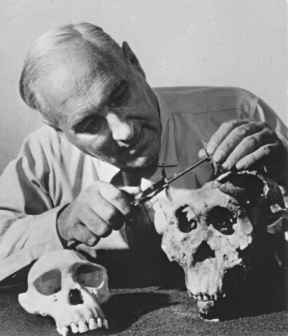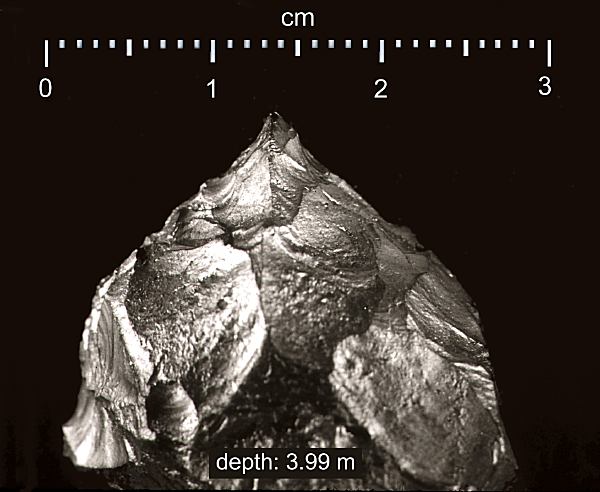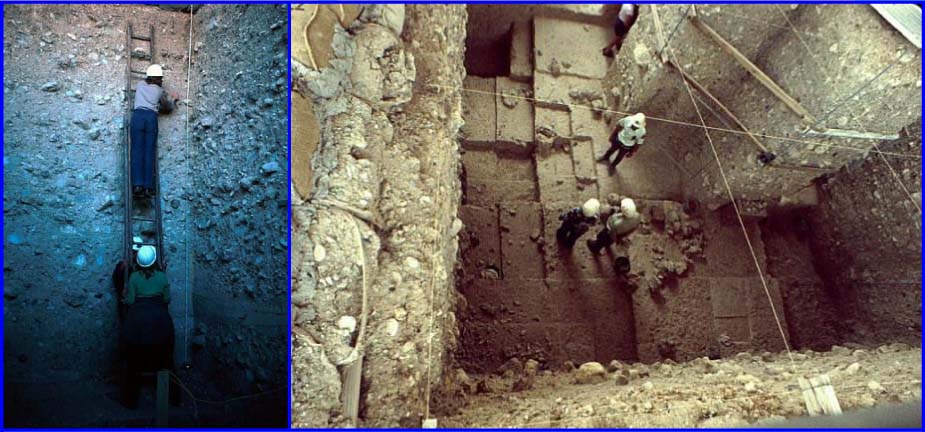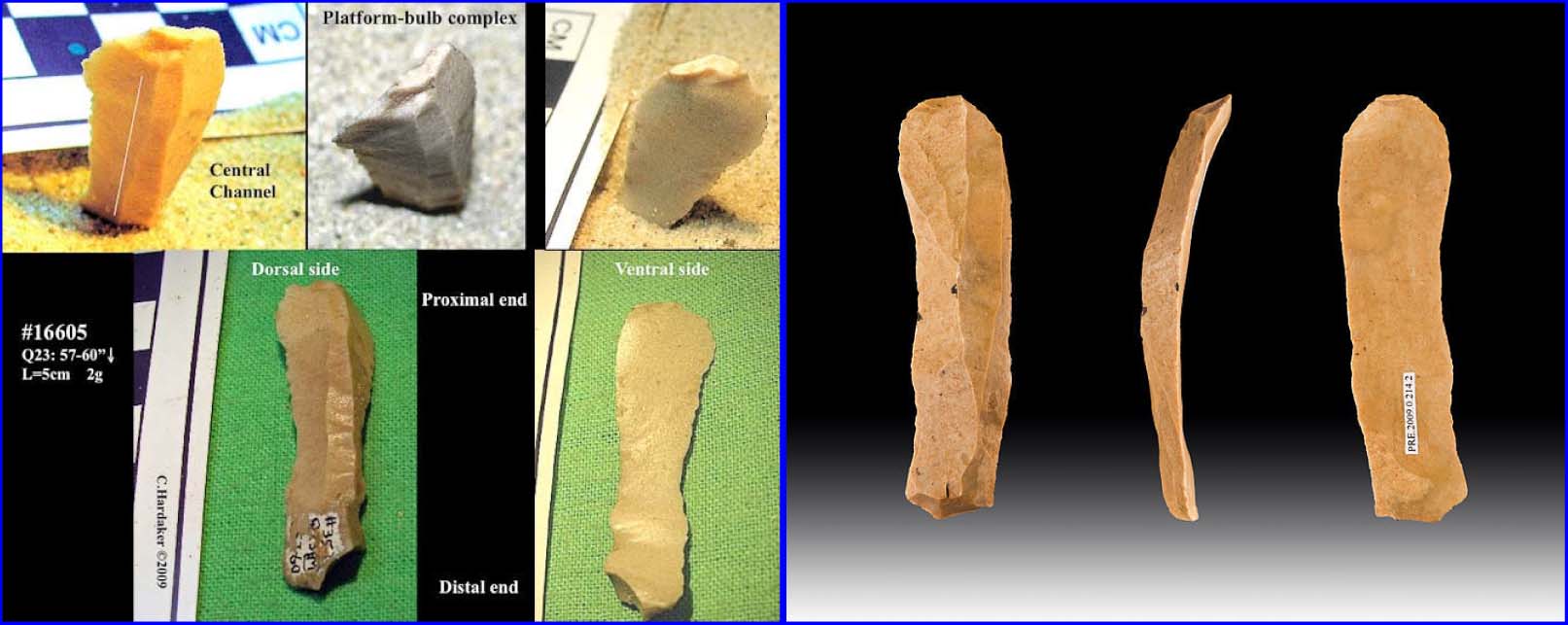If
I were to be asked, “what is more important, discovery of a few apelike
creatures in Africa purportedly aligning with a popular scientific
axiom  (axiom: an idea not demanding evidence in order to be accepted as true) or the discovery of ‘cultural’ evidence of early man in the Americas,” I would unhesitatingly go with the cultural evidence.
(axiom: an idea not demanding evidence in order to be accepted as true) or the discovery of ‘cultural’ evidence of early man in the Americas,” I would unhesitatingly go with the cultural evidence.
Fig. 1. The late Dr. Louis Leakey, Project Director at Calico Early Man Site from 1963 until his death in 1972. Leakey’s expertise as the single most recognizable name in early human archaeology and paleontology is being undermined by destruction of the evidence from Calico.
Unlike in normal science where objectivity is paramount, in the modern study of biological fossil remains everything in the realm of interpretation depends upon the predispositions of scientists and what they are ‘looking for.’ This is as true of plant and animal fossils as it is of human fossils.
However, in the case of stone tools, their study additionally involves the step-by-step real-time processes by which they were made using undisputed physical evidence to “prove” these processes, so it involves a level of science beyond the speculations of paleontologists and biologists.
 This
conflict between submitting to a popular theory that one was trained to
believe while at the same time being open to adjusting ones opinions
based on new evidence is the legacy of Louis Leakey (Fig. 1).
This
conflict between submitting to a popular theory that one was trained to
believe while at the same time being open to adjusting ones opinions
based on new evidence is the legacy of Louis Leakey (Fig. 1).
In our modern science mentality Leakey’s work in Africa promoting the popular paradigm that man evolved there and then slowly spread through Europe and Asia is regarded as important while his work at Calico Early Man Site—a site in the Americas with signs of human culture dating to c. 50,000-200,000 years old (Figs. 2, 3, 4)—is derided by promoters of the standard paradigm as an embarrassment (see Chris Hardaker’s, The Abomination of Calico, part 1, PCN #6, July-August 2010).
Fig. 2. Beaked graver from Calico Master Pit 1. Like similar treatment of evidence from 250,000-year old Hueyatlaco, Mexico, and 400,000-yr old Bilzingsleben, Germany, there are obviously other motives besides the scientific quest for truth behind blocking Calico’s evidence. Photo: D. Griffin, calicodig.org.

Fig. 3. Two views of Calico Master Pit 1 started by Dr. Louis Leakey outside Barstow California in 1963 with funding from the National Geographic Society. The pits and their controversial evidence are now being blocked from archaeologists while published and catalogued artifacts are being systematically destroyed. Left photo: T. Oberlander; Right photo: D. Griffin; calicodig.org.
I suggest that the exact opposite is true, that Leakey’s work at Calico (partly inspired by his observation that there were far too many complex languages in the Western Hemisphere to have developed in the mere 12,000-15,000 years humans are taught to have been there) is the most innovative part of his work while his pre-programmed belief in African origins, and his finding there exactly what he was programmed to look for, will eventually be seen as a true embarrassment not only to anthropology but to all science. As public knowledge that opposing evidence is routinely blocked from them increases, the weaknesses of everything Darwin proposed (including cognitive evolution) will start becoming more visible. Calico showed that Leakey was an objective scientist. The fact is, like the similar story of Virginia Steen-McIntyre, Leakey’s involvement in Calico created problems for the evolution community; that is the real cause for the ridicule he faced.
In this article and its accompanying audio recording of Leakey’s 1970 talk about the
